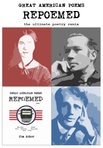What ELSE Could Be Going On?
Here’s a quick, fun way to introduce a unit on poetry.
1. First, post the following statements:
A businessman had just turned off the lights in the store when a man appeared and demanded money. The owner opened a cash register. The contents of the cash register were scooped up and the man sped away. A member of the police force was notified promptly.
2. Second, using a “think-pair-share,” ask students to think about and then discuss “what is going on here?” After pairs of students have had an opportunity to discuss “what is going on,” have students report what they discussed. In most if not every case, students will report that there was some sort of crime committed.
Ask what evidence they have from the statements to support their ideas – and ask for specific words from the statements. Most students, for example, will point out “turned off the lights,” “a man appeared,” “opened a cash register,” the contents were “scooped up,” and so on.
As you discuss this, ask the students, “What time of day is it?” They will likely say “night time.” Again, ask which word(s) led them to this conclusion – especially since no specific time of day is mentioned. Students will note that the business “had just turned off the lights.”
3. Next, after you have discussed “what is going on here” and you have asked students to give specific words/phrases to support their ideas, ask, “WHAT ELSE could be going on?” Have them think about and discuss in pairs some OTHER story that could have happened where these statements fit. After students have had time to discuss this in pairs, have volunteers tell what stories they devised where these statements would make sense. Again, have them explain how specific words and/or phrases support their new accounts.
That’s it! That’s a quick and easy way to introduce a unit of poetry – by discussing the short passage above and noting how it can be understood in various ways simply by interpreting the language differently. At this point, you’re ready to introduce the first poem in your unit! Read your poem with your students and ask, “What is going on here? What ELSE could be going on? What specific words and phrases led you to your interpretations?”
1. First, post the following statements:
A businessman had just turned off the lights in the store when a man appeared and demanded money. The owner opened a cash register. The contents of the cash register were scooped up and the man sped away. A member of the police force was notified promptly.
2. Second, using a “think-pair-share,” ask students to think about and then discuss “what is going on here?” After pairs of students have had an opportunity to discuss “what is going on,” have students report what they discussed. In most if not every case, students will report that there was some sort of crime committed.
Ask what evidence they have from the statements to support their ideas – and ask for specific words from the statements. Most students, for example, will point out “turned off the lights,” “a man appeared,” “opened a cash register,” the contents were “scooped up,” and so on.
As you discuss this, ask the students, “What time of day is it?” They will likely say “night time.” Again, ask which word(s) led them to this conclusion – especially since no specific time of day is mentioned. Students will note that the business “had just turned off the lights.”
3. Next, after you have discussed “what is going on here” and you have asked students to give specific words/phrases to support their ideas, ask, “WHAT ELSE could be going on?” Have them think about and discuss in pairs some OTHER story that could have happened where these statements fit. After students have had time to discuss this in pairs, have volunteers tell what stories they devised where these statements would make sense. Again, have them explain how specific words and/or phrases support their new accounts.
That’s it! That’s a quick and easy way to introduce a unit of poetry – by discussing the short passage above and noting how it can be understood in various ways simply by interpreting the language differently. At this point, you’re ready to introduce the first poem in your unit! Read your poem with your students and ask, “What is going on here? What ELSE could be going on? What specific words and phrases led you to your interpretations?”
No comments have been added yet.



